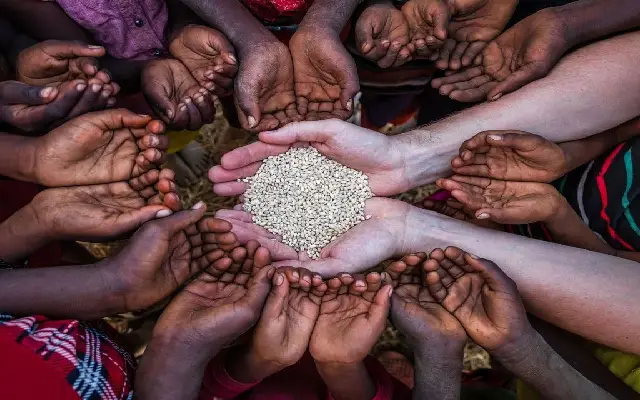In 2023, global food insecurity reached alarming levels, affecting approximately 282 million people worldwide, with conflicts in regions such as Gaza and Sudan exacerbating the crisis, according to reports from United Nations agencies and development organizations.
The increase in acute hunger, totaling 24 million more people compared to 2022, was attributed to a combination of factors including extreme weather events and economic shocks. The Food Security Information Network (FSIN) published a comprehensive global report on food crises, labeling the outlook as “bleak” for the year. The report is a collaborative effort involving UN agencies, the European Union, and various governmental and non-governmental entities.
This marks the fifth consecutive year of escalating acute food insecurity, characterized by food deprivation threatening lives or livelihoods. The expansion of geographic coverage in the report revealed deteriorating conditions in 12 countries, with new or intensified shocks affecting additional regions. Notably, crises intensified in areas such as Sudan and the Gaza Strip.
In Gaza alone, approximately 700,000 people, including 600,000 in Gaza City, were on the brink of starvation in 2023. Since 2016, the number of food-insecure individuals has surged from 108 million to 282 million, with the proportion of affected populations doubling from 11 percent to 22 percent in afflicted areas.
Ongoing major food crises persist in countries like Afghanistan, the Democratic Republic of Congo, Ethiopia, Nigeria, Syria, and Yemen. UN Secretary-General Antonio Guterres emphasized the dire situation, attributing it to conflicts, climate change, and economic challenges, coupled with insufficient humanitarian response.
Looking ahead to 2024, progress hinges on ending hostilities in conflict zones, according to UN officials. Immediate humanitarian aid could significantly alleviate crises in regions like Gaza and Sudan once access is granted. Factors such as political instability and reduced agricultural production contributed to worsening conditions in areas like Haiti.
Furthermore, climate-related phenomena like the El Nino weather pattern threaten to exacerbate drought conditions in West and Southern Africa. Conflict and insecurity remain the primary causes of acute hunger in 20 countries or territories, affecting 135 million people, while extreme weather events and economic shocks collectively impact millions more.
Despite a decrease in global food prices, many low-income, import-dependent countries fail to benefit, hampered by high debt levels that limit government intervention. However, the report noted improvements in conditions for 17 countries, including the Democratic Republic of Congo and Ukraine, signaling potential areas for progress amidst the global food crisis.
















